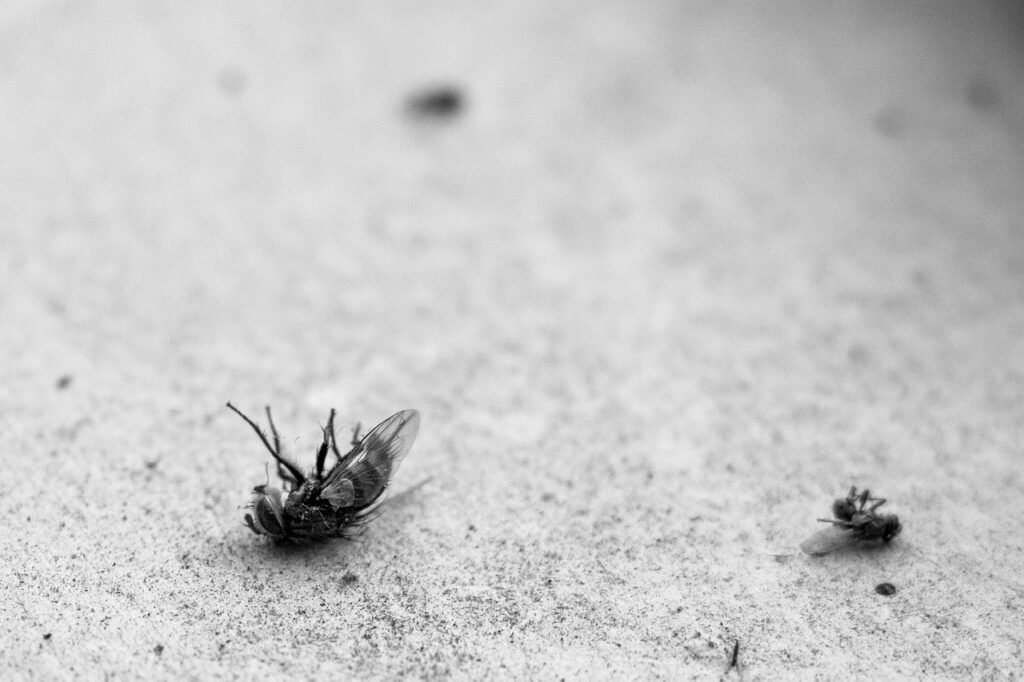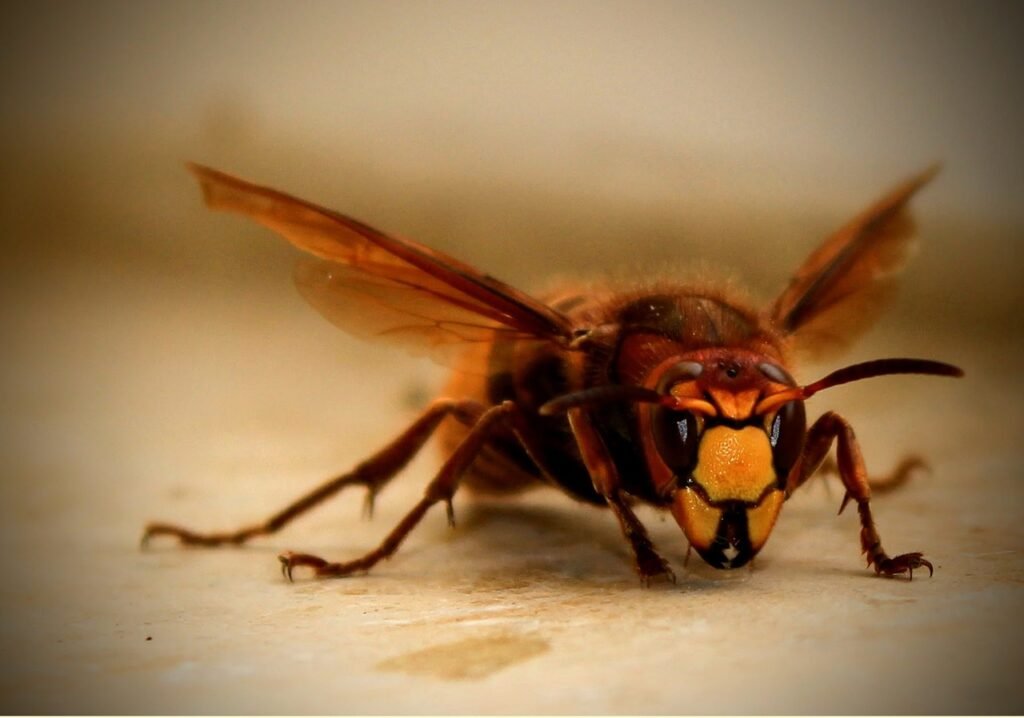Termites can be a homeowner’s worst nightmare, causing extensive damage to the structure of your house. That’s why it’s crucial to know what to expect during termite treatment. In this article, we will walk you through the process and give you an idea of what’s involved. From the initial inspection to the actual treatment, we’ll provide you with valuable insights to help ease your concerns and protect your beloved home from these destructive pests. So, let’s get started and find out what lies ahead during termite treatment!


Understanding the Importance of Termite Treatment
Termite treatment is crucial for maintaining the structural integrity of your property, as these tiny pests can cause significant damage to buildings. Termites feed on wood and other cellulose materials, such as paper and fabric, which are commonly found in homes and buildings. Their ability to silently and stealthily consume these materials makes them a formidable threat to the stability of structures. Investing in termite treatment not only protects your property but also ensures the safety and well-being of everyone who lives or works in it.
The Impact of Termites on Structures
Termites have the potential to cause extensive damage to structures, including wooden beams, flooring, walls, and even furniture. These pests often infest the hidden parts of a building, such as crawl spaces and attics, making it difficult to detect their presence until significant damage has already occurred. The structural damage caused by termite infestations can compromise the stability of a building, leading to costly repairs or even collapse in severe cases. By understanding the impact termites can have on structures, you can prioritize termite treatment to avoid these detrimental consequences.
Health Risks Posed by Termites
Aside from structural damage, termites can also pose health risks to the occupants of infested buildings. When termites burrow through wood, they create tunnels and galleries that weaken the wood’s structure and create potential entry points for other pests, such as ants and cockroaches. These pests can bring harmful bacteria and allergens into your home or workplace, increasing the risk of respiratory issues and allergic reactions. Additionally, the dust and debris left behind by termites can aggravate existing respiratory conditions, making it essential to eliminate these pests through proper termite treatment.


Economic Consequences of Termite Infestations
Termite infestations can have significant economic consequences for property owners. The cost of repairing termite damage can quickly add up, especially if the infestation has been left untreated for an extended period. Depending on the extent of the damage, you may need to replace wooden structures, flooring, or even entire sections of your property. The longer a termite infestation goes unnoticed and untreated, the more extensive and costly the repairs become. By investing in termite treatment, you can mitigate the economic impact of these destructive pests and protect the value of your property.
Types of Termite Treatments
There are various methods and techniques used for termite treatment, each with its own advantages and effectiveness. It’s important to understand the different types of termite treatments available so that you can choose the most suitable option for your situation. Here are some common types of termite treatments:
Liquid Termiticides
Liquid termiticides are chemical treatments that are applied to the soil around and beneath a building’s foundation. These termiticides create a barrier that kills termites upon contact or acts as a repellent, preventing termites from entering the structure. Liquid termiticides are effective for both pre-construction and post-construction treatments and can provide long-lasting protection against termite infestations.
Baiting Systems
Baiting systems involve strategically placing bait stations around your property to attract termites. These bait stations contain a slow-acting toxin that termites consume and then carry back to their colony, ultimately eliminating the entire termite population. Baiting systems are an environmentally friendly option and can be effective in controlling termite infestations.
Food Treatment Methods
Food treatment methods involve treating wooden structures, such as framing and furniture, with termiticides or borates. These treatments penetrate the wood, making it unappealing or toxic to termites. Food treatment methods are commonly used during construction or remodeling projects to provide long-term protection against termites.
Fumigation
Fumigation is a highly effective treatment method for severe termite infestations. It involves sealing the infested area and releasing a lethal gas, typically sulfuryl fluoride or methyl bromide, to eliminate termites. Fumigation requires professional expertise and careful preparation to ensure the safety of occupants and pets. It is typically used as a last resort when other treatment methods have proven ineffective.
Understanding the different types of termite treatments allows you to make an informed decision when selecting the most appropriate method for your specific situation. Consult with a professional termite control company to determine which treatment option is best suited to address your termite infestation.
Evaluation Stage in Termite Treatment
Before initiating any termite treatment, a comprehensive evaluation stage is necessary to assess the extent of the infestation and plan the most effective course of action. This evaluation stage involves several key steps:
Initial Inspections
During the initial inspection, a termite control technician will thoroughly examine your property, both externally and internally, to identify any signs of termite activity. This may include inspecting the foundation, crawl spaces, attics, wooden structures, and areas with moisture or water damage. The technician will look for physical evidence of termite presence, such as mud tubes, discarded wings, and wood damage.
Identifying the Species
Identifying the termite species is crucial in determining the appropriate treatment method. Different termite species have distinct behavior patterns and preferences, and treatments can vary accordingly. The termite control technician will identify the species present in your property, typically through the examination of swarmers or termite soldiers.
Evaluating the Scope of Infestation
After identifying the termite species, the technician will assess the scope and severity of the infestation. This evaluation helps determine the size of the colony, the extent of damage, and the potential areas of concern. Evaluating the scope of the infestation allows the technician to create a tailored treatment plan that effectively targets the termites and prevents future infestations.
By undergoing a thorough evaluation stage, including initial inspections, species identification, and assessing the scope of the infestation, termite control professionals can provide you with an accurate diagnosis and a targeted treatment plan to address your specific termite problem.


Preparing for the Termite Treatment
Preparing your property for termite treatment ensures the effectiveness of the chosen treatment method and the safety of everyone involved. Here are some essential steps to follow when preparing for termite treatment:
Moving Furniture
To facilitate access for termite control technicians, it is advisable to move furniture away from the walls and corners of the treated areas. By creating open spaces, technicians can apply the treatment to all the targeted areas more effectively.
Securing Your Pets
During the termite treatment process, it is crucial to ensure the safety of your pets. Depending on the treatment method chosen, you may need to relocate your pets temporarily or keep them in designated areas away from the treated zones. Consult with your termite control technician for specific instructions on how to safely manage your pets during the treatment.
Covering of Appliances
Certain types of termite treatments, such as fumigation, may require covering or sealing appliances and other sensitive items to protect them from potential damage. Follow the guidelines provided by the termite control company to safeguard your belongings and prevent any inadvertent issues during the treatment process.
During the Termite Treatment Process
Once you have adequately prepared your property, the termite treatment process can begin. This stage involves the actual implementation of the chosen treatment method, adhering to safety measures, and utilizing specialized equipment.
Implementation of Chosen Treatment
Whether you have opted for liquid termiticides, baiting systems, food treatment methods, or fumigation, the treatment will be carefully applied according to the specific requirements of your property and the extent of the infestation. Professional termite control technicians have the expertise and training to ensure the effective application of the chosen treatment.
Safety Measures During Treatment
Termite treatment often involves the use of chemicals or gases. To ensure the safety of occupants, technicians will take necessary precautions and follow established protocols. This may include sealing treated areas, posting warning signs, and utilizing protective equipment. The application of these safety measures minimizes any potential risks to humans, pets, and the environment.
Termite Control Technicians’ Equipment
Termite control technicians utilize specialized equipment to apply treatments and reach inaccessible areas. Equipment such as sprayers, injectors, and drilling machines allows them to effectively distribute termiticides or bait systems. These tools ensure that the treatment reaches all necessary spots, maximizing its efficacy.
By following the safety measures outlined by the termite control technicians and utilizing specialized equipment, the termite treatment process can be executed safely and efficiently.
Chemicals Used in Termite Treatment
Termite treatments often involve the use of chemicals that are specifically formulated to eliminate termites and prevent future infestations. It is important to understand the types of chemicals used, their potential side effects, and the safety precautions associated with their application.
Types of Chemicals
Different types of chemicals may be employed in termite treatments, including liquid termiticides, borates, and fumigants. Liquid termiticides are commonly used for soil treatments and act as barriers against termite intrusion. Borates, on the other hand, are wood preservatives that can be applied to prevent or control termite damage. Fumigants are gases that are used to eliminate termites in severe infestations. Each type of chemical has its specific purpose and mode of action in termite treatment.
Potential Side Effects
While termite control chemicals are formulated to be effective against termites, it is important to be aware of their potential side effects. Some chemicals may have toxicity levels that can pose health risks to humans and pets if not handled properly. It is crucial to carefully follow the instructions provided by the termite control company and take necessary precautions to minimize any potential side effects.
Safety Precautions
Termite control professionals are trained to handle and apply chemicals safely. They follow strict safety protocols to protect themselves and the occupants of the treated property. Safety precautions may include wearing protective clothing, utilizing proper ventilation, and ensuring that treated areas are secure and inaccessible during and after the treatment process.
By understanding the types of chemicals used, their potential side effects, and the safety precautions associated with their application, you can have peace of mind knowing that the termite treatment process is being carried out responsibly and with the utmost care for your safety.
Post-Termite Treatment Care
After the completion of termite treatment, certain post-treatment care is necessary to ensure its effectiveness and to prevent future infestations. Here are some important steps to take:
Clear Up and Sanitation Requirements
Thoroughly clean up the treated areas, removing any debris, termite droppings, or termite nests. This helps eliminate any remaining traces of termite activity and prevents any attractants that might encourage new infestations. Regular cleaning and maintenance will create an environment that is less hospitable to termites.
Allowing Adequate Ventilation
Proper ventilation is essential after termite treatment, especially if chemicals or fumigants were used. Opening windows and doors, running fans, and utilizing air circulation systems will help disperse any residual chemicals and promote fresh air circulation. Adequate ventilation also helps in drying out treated areas, preventing moisture buildup that could attract termites.
Avoiding Disturbed Soil
Avoid disturbing the treated soil around and beneath your property, as this can compromise the effectiveness of the treatment. Do not dig or garden in the treated areas for a certain period as recommended by the termite control company. Minimize any activities that could disturb the treated soil and potentially create entry points for new termite infestations.
By following these post-termite treatment care guidelines, you can ensure that the treatment remains effective and maintain a termite-free environment in your home or workplace.
Monitoring After Termite Treatment
Regular monitoring after termite treatment is essential to evaluate the effectiveness of the treatment and promptly address any signs of termite activity. Here are some key steps to take during the monitoring stage:
Scheduling Regular Inspections
Schedule regular inspections with a professional termite control company to assess the condition of your property and monitor any potential signs of termite activity. Inspections should be conducted at least once a year to catch any early indicators of reinfestation.
Signs of Successful Treatment
During inspections, look for signs that confirm the success of the termite treatment. These may include the absence of live termites, no further damage to wooden structures, and no new termite activity. It is crucial to communicate any findings to the termite control company to ensure ongoing termite protection.
Steps in Case of an Unsuccessful Treatment
If any signs of termite activity persist after treatment, notify your termite control company immediately. They will reassess your property, identify any potential reasons for the treatment’s failure, and implement additional measures to resolve the issue. Promptly addressing any concerns will help maintain the efficacy of the termite treatment and prevent further damage.
By regularly monitoring your property after termite treatment and promptly addressing any signs of potential reinfestation, you can ensure long-term termite control and protect your property from further damage.
Long Term Preventive After Termite Treatment
While termite treatment is crucial for addressing existing infestations, long-term preventive measures are equally important to minimize the risk of future termite problems. Here are some practices to adopt for long-term termite prevention:
Routine Maintenance
Implement regular maintenance practices to keep your property in good condition and minimize the risk of entry points for termites. This includes promptly addressing any plumbing leaks, repairing damaged wood or roof shingles, and ensuring proper drainage around the foundation. By maintaining a well-maintained property, you can minimize the appeal of your property to termites.
Implementing Termite Preventative Measures
Consider implementing termite preventative measures, such as installing physical barriers, also known as termite shields or metal mesh, around the foundation of your property. These barriers act as physical deterrents, preventing termites from gaining access to the structure. Additionally, treating exposed wood with borate-based products can offer long-term protection against termite damage.
Termite Bond and Protection Plan
Investing in a termite bond or protection plan with a reputable termite control company provides ongoing termite protection and peace of mind. Termite bonds typically include regular inspections, proactive treatment for any signs of termite activity, and warranties that cover future termite damage. By having a comprehensive termite bond, you can confidently protect your property from future infestations and minimize the potential costs associated with termite damage.
By adopting long-term preventive measures, such as routine maintenance, implementing termite preventative measures, and investing in a termite bond or protection plan, you can significantly reduce the risk of future termite infestations and protect your property in the long run.
Cost of Termite Treatment
The cost of termite treatment can vary depending on several factors, including the size of your property, the severity of the infestation, and the chosen treatment method. Understanding the cost considerations associated with termite treatment can help you budget accordingly and make informed decisions. Here are some important factors to consider:
Treatment Pricing Variability
Termite treatment pricing can vary significantly based on the size and complexity of the property, as well as the extent of the infestation. Larger properties or severe infestations may require more extensive treatments and thus incur higher costs. It is advisable to obtain multiple quotes from reputable termite control companies to compare pricing and services before making a decision.
Insurance and Warranty Possibilities
Check if your homeowner’s insurance policy covers termite damage or offers additional coverage for termite treatment. Some policies may provide protection against certain types of termite damage, while others may require specific endorsements or riders to cover termite-related expenses. Additionally, inquire about the warranties provided by termite control companies, as warranties can offer additional financial protection in case of reinfestation or treatment failure.
Hidden Costs of Termite Treatment
When considering the cost of termite treatment, it is important to account for potential hidden costs. These may include costs of temporary relocation during specific treatment methods, repair costs for termite damage that is already present, or ongoing monitoring and preventive measures. By factoring in all potential costs, you can ensure that you are financially prepared for the entire termite treatment process.
While termite treatment may require a significant investment, it is crucial to prioritize the protection of your property and the prevention of costly structural damage. By considering the treatment pricing variability, insurance and warranty possibilities, and hidden costs, you can make an informed decision and safeguard your property from the devastating consequences of termite infestations.
Understanding the importance of termite treatment, the different treatment methods available, and the necessary steps involved will empower you to tackle termite infestations effectively. By taking proactive measures, investing in professional termite control, and prioritizing long-term prevention, you can secure the structural integrity of your property and maintain a safe, termite-free environment for years to come.
Your Expert in Animal Control and Extermination. Trust our experience for humane, effective pest management, protecting your property and ensuring peace of mind with Michael S.





